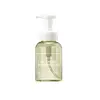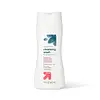What's inside
What's inside
 Benefits
Benefits

No benefits
 Concerns
Concerns

 Ingredients Side-by-side
Ingredients Side-by-side

Artemisia Princeps Leaf Extract
Skin ConditioningWater
Skin ConditioningGlycerin
HumectantCoco-Betaine
CleansingDisodium Cocoamphodiacetate
CleansingButylene Glycol
HumectantMethylpropanediol
SolventLauryl Hydroxysultaine
CleansingChlorella Vulgaris Extract
Skin ConditioningOlea Europaea Fruit Oil
MaskingArtemisia Vulgaris Oil
PerfumingQuillaja Saponaria Bark Extract
CleansingRosmarinus Officinalis Leaf Oil
MaskingJuniperus Communis Fruit Oil
MaskingFerula Galbaniflua Resin Oil
AntimicrobialChrysanthemum Zawadskii Extract
Skin ConditioningPaeonia Lactiflora Root Extract
Skin Conditioning1,2-Hexanediol
Skin ConditioningSodium Chloride
MaskingSodium Citrate
BufferingC12-14 Alketh-12
EmulsifyingCoco-Glucoside
CleansingCitric Acid
BufferingCaprylyl Glycol
EmollientGlucose
HumectantPentylene Glycol
Skin ConditioningFructooligosaccharides
HumectantFructose
HumectantSodium Cocoyl Isethionate
CleansingSodium Phytate
Ethylhexylglycerin
Skin ConditioningArtemisia Princeps Leaf Extract, Water, Glycerin, Coco-Betaine, Disodium Cocoamphodiacetate, Butylene Glycol, Methylpropanediol, Lauryl Hydroxysultaine, Chlorella Vulgaris Extract, Olea Europaea Fruit Oil, Artemisia Vulgaris Oil, Quillaja Saponaria Bark Extract, Rosmarinus Officinalis Leaf Oil, Juniperus Communis Fruit Oil, Ferula Galbaniflua Resin Oil, Chrysanthemum Zawadskii Extract, Paeonia Lactiflora Root Extract, 1,2-Hexanediol, Sodium Chloride, Sodium Citrate, C12-14 Alketh-12, Coco-Glucoside, Citric Acid, Caprylyl Glycol, Glucose, Pentylene Glycol, Fructooligosaccharides, Fructose, Sodium Cocoyl Isethionate, Sodium Phytate, Ethylhexylglycerin
Ingredients Explained
These ingredients are found in both products.
Ingredients higher up in an ingredient list are typically present in a larger amount.
Citric Acid is an alpha hydroxy acid (AHA) naturally found in citrus fruits like oranges, lemons, and limes.
Like other AHAs, citric acid can exfoliate skin by breaking down the bonds that hold dead skin cells together. This helps reveal smoother and brighter skin underneath.
However, this exfoliating effect only happens at high concentrations (20%) which can be hard to find in cosmetic products.
Due to this, citric acid is usually included in small amounts as a pH adjuster. This helps keep products slightly more acidic and compatible with skin's natural pH.
In skincare formulas, citric acid can:
While it can provide some skin benefits, research shows lactic acid and glycolic acid are generally more effective and less irritating exfoliants.
Most citric acid used in skincare today is made by fermenting sugars (usually from molasses). This synthetic version is identical to the natural citrus form but easier to stabilize and use in formulations.
Read more about some other popular AHA's here:
Learn more about Citric AcidChances are, you eat sodium chloride every day. Sodium Chloride is also known as table salt.
This ingredient has many purposes in skincare: thickener, emulsifier, and exfoliator.
You'll most likely find this ingredient in cleansers where it is used to create a gel-like texture. As an emulsifier, it also prevents ingredients from separating.
There is much debate on whether this ingredient is comedogenic. The short answer - comedogenic ratings don't tell the whole story. Learn more about comegodenic ratings here.
The concensus about this ingredient causing acne seems to be divided. Research is needed to understand if this ingredient does cause acne.
Scrubs may use salt as the primary exfoliating ingredient.
Learn more about Sodium ChlorideWater. It's the most common cosmetic ingredient of all. You'll usually see it at the top of ingredient lists, meaning that it makes up the largest part of the product.
So why is it so popular? Water most often acts as a solvent - this means that it helps dissolve other ingredients into the formulation.
You'll also recognize water as that liquid we all need to stay alive. If you see this, drink a glass of water. Stay hydrated!
Learn more about Water